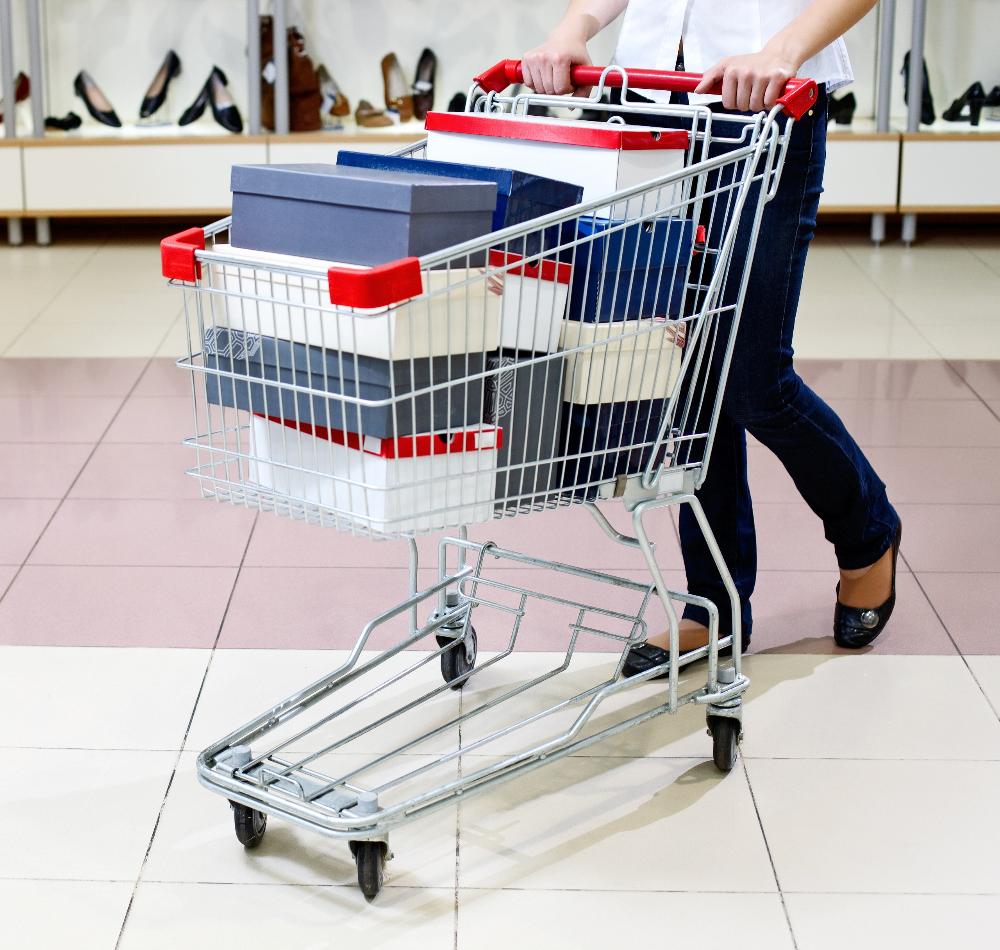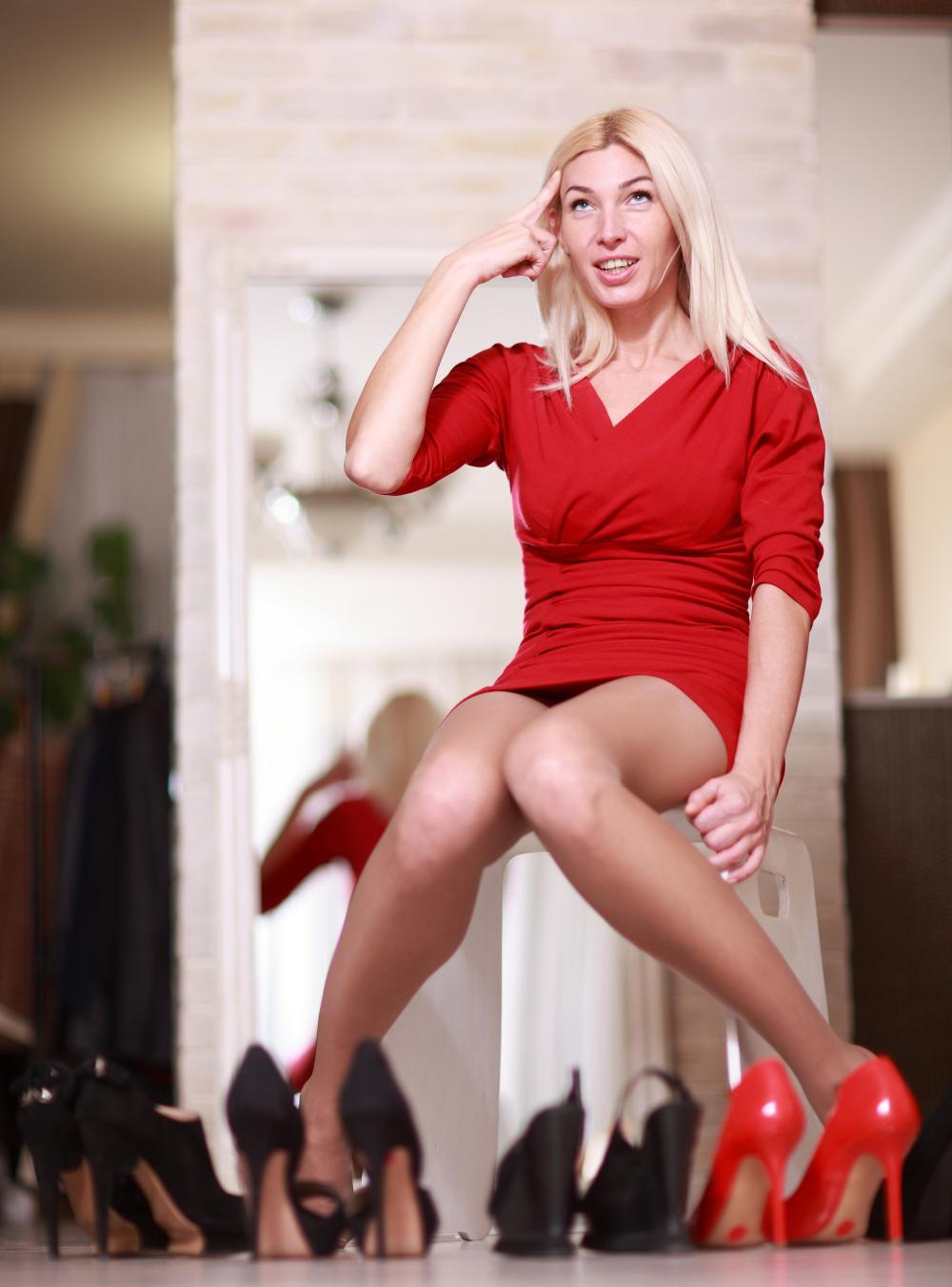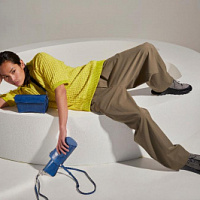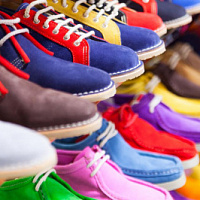
How to optimize the three main cost items: purchasing goods, renting retail space and paying staff?

Today it’s fashionable to talk about business process optimization, automation, digital technology and the digitalization of sales. We listen to speakers and read the news of the retail, we are surprised at modern technologies, we are at war with marketplaces and ... WE DO NOT UNDERSTAND HOW TO CHANGE YOUR OWN SHOE SHOPPING STORE, how to make it successful and how, in the end, to attract customers to your point of sale. Where the key to success is hidden, says SR expert Natalya Chinenova.
 Natalia Chinenova -
Natalia Chinenova - @fcgmedia
First, let's deal with the terms. What is “optimization”? In fact, there is nothing terrible or incomprehensible in this process. Optimization is cutting off all that is superfluous and inefficient. Unnecessary and inefficient are our unjustified costs of doing business and maintaining a point of sale. What is the cost of maintaining a retail business? First of all - the purchase of goods, the most money-intensive article. The second item by weight is the lease of retail space, the third is the maintenance of the company's personnel. We’ll talk about how to optimize these three cost items in this article.
1. OPTIMIZE PURCHASE OF GOODS
Nowadays, goods are not in short supply. The level of consumption of clothes and shoes in Russia has decreased almost twofold compared with the previous five years. The average number of pairs of shoes that one consumer buys per year is 1,8 pairs. Moreover, modern consumers prefer comfortable, “sports” models to all types of shoes. According to NPD Group's Retail Tracking Service, sales of high-heeled shoes are reduced by 11-12% annually, while sales of sneakers are growing by 37%, and according to the Obuv Rossii company for 2018, sales of shoes without heels make up more than 70% of all shoe sales. Simply put, sneakers are our everything. Accordingly, the first thing you should pay attention to when buying shoes is not beauty and compliance with trends, but comfort and convenience in wearing, lightness and durability of the model, that is, the consumer properties of each particular pair.
In order to understand how many pairs of shoes need to be purchased for each season, we will use the rules for the turnover of goods on the trading floor:
- the product balance of the retail store for each first day of each current month should be two times higher than the retail turnover of this store for the past month in kind,
- in other words, the turnover of goods on the trading floor cannot exceed 60 days.
For example, if there are 1 pairs of shoes in our sales area as of July 000, then in June we should have sold at least 1 pairs (about 500-16 pairs of shoes, on average, per day).
It remains to understand how these pairs that are on the trading floor are visible and visible to our customers. And now we are not talking about visual merchandising at all, but about the rules for calculating the capacity of the trading floor of each store. At the same time, in the shoe business, occupancy is measured both in linear and in square meters:
- running meter - this is the standard shelf length of commercial equipment for the presentation of shoes;
- there are at least five shelves per square meter, that is, five linear meters;
- on one shelf, depending on the age groups of consumers and the positioning of the store, we can place from 7 to 14 pairs of shoes.
It turns out that for 1 square. m of retail space, we should have from 35 to 70 pairs of shoes. It is believed in the world that in order to increase sales efficiency (so that buyers can pay attention to the model and consider it), the distance between pairs of shoes cannot be less than 30 mm and more than 100 mm. It turns out that 7 pairs per linear meter is a more effective presentation than 14.
Thus, taking as standard, the number of 7 pairs of shoes per 1 running meter of commercial equipment and 35 pairs - per 1 square meter, we can calculate the planned number of pairs for a store of any size.
For example, for a store with an area of 50 sq. m, the estimated number of pairs of shoes for the first filling of the store should be equal to 1 pairs, or 750-218 boxes of shoes (one standard box, as a rule, consists of 219 pairs of dimensional slides). If we want to achieve a variety of models, then most likely these 8 boxes will consist of 218 models. Well, in the case when we are confident in the sales of an item, the number of boxes per model will increase, and the total number of models in the sales area will decrease.
Using these two basic rules, we can quantify purchases for both the season and the whole year. In our example, for a store with an area of 50 sq. m, 1 pairs of shoes are needed, respectively, we must sell at least 750 pairs of shoes (876 pairs per day) per month of sales. There are only 29 trading months in the season, so in five months we must have time to sell 5 pairs of shoes (4 pairs are multiplied by 380 months). We will sell the rest of the shoes during the sale period. If we add up all the data, we get the following standards FOR OUR EXAMPLE:
- for a new store of 50 sq. m - the first purchase is 1 750 pairs and the purchase for the season is 4 380 pairs of shoes, total 6 130 pairs of shoes;
- for a working store that already has a stock of goods, the purchase for the season cannot exceed 4 pairs.
But we will be realistic. There are not so many regional stores where you can sell 29 pairs of shoes per day. As a rule, sales range from 10 to 22 pairs per day. In order to effectively invest money in the procurement of goods, we need to implement FIVE MAIN TERMS:
- Calculate the capacity of the trading floor in kind.
- Calculate the passenger flow of a shopping center or store.
- Compare the estimated turnover for patency and the estimated turnover for the capacity of the trading floor.
- If the indicators are close enough - rent an area and open a store.
- If the permeability indicators are much lower than the estimated turnover on the capacity of the trading floor:
- reduce the number of pairs presented by 1 square. m of retail space (odd amount: instead of 7 pairs, you can present 5, and on some shelves even 3);
- reduce the trading area (move to another trading platform in the same shopping center, supplement the assortment of shoes with any accessories, such as bags or move to another shopping center).

Now let's talk about the purchase price and trade margin on shoes. The mark-up generally accepted in the Russian footwear market at the beginning of the season is 120-150% and at the end of the season at least 80%. It is clear that some stores charge even shoes at 70%, but such a mark-up is possible only at a very low rental rate, otherwise the business becomes unprofitable, the profit at the end of the season will be less than 10%, that is, lower than the bank deposit rate summarized with the inflation rate. It turns out that at a margin of 70% it is more profitable for us to close the business and put money in the bank.
Taking into account the rationalism of modern consumers, the retail price of one pair, for example, men's leather shoes, cannot exceed 6 rubles, and the average retail price of one pair of shoes should not exceed 000 rubles. Consequently, the average price of one pair of shoes for the spring-summer season for a store with a target audience that has "average" and "average minus" income should be approximately 4 - 000 rubles in the purchase (we divide the average retail price by the average margin coefficient at the beginning of the season).
For our example, a virtual store with an area of 50 sq. m - investments in seasonal purchases will amount to approximately 7 million rubles, provided that at least 29 pairs of shoes are sold, on average, per day.
The main thing is not to buy more, so as not to freeze money, and give buyers the opportunity to consider shoes.
2. WE OPTIMIZE THE COSTS FOR RENTAL AREA
Optimizing the cost of renting a retail space implies that we get a certain income from each rented square centimeter.
From what area we DO NOT RECEIVE income? We do not receive income from the following leased retail store space:
- from a non-sales area: auxiliary premises, cabinets, showcases, zone of a settlement center, ventilation chambers, etc .;
- from the area occupied by unclaimed goods: single balances, off-season goods, re-purchase, etc .;
- from the area in which the buyers DO NOT SEE the goods, that is, from the area that is overloaded with goods.
The shoe business has its own standards for the ratio of trade and non-trade area, while the ratio of the sum of all the auxiliary premises (storerooms, shop windows, zone of the settlement center) and the sales area should be as follows: 40% to 60% if half pairs are displayed on the trading floor . If on the trading floor shoes are presented simultaneously with boxes (for example, boxes on shelves behind shoes, on upper shelves or below shelves), then the ratio will change and will be 20% to 80%.
Thus, the first thing to check is the ratio of the trade and non-trade area of the store, depending on the presentation technique of the shoes.
The second thing we will consider is the number of pairs of shoes on the trading floor. Here we use the formulas from the "Procurement Optimization" section. If there are more shoes than should be in accordance with the calculations, it is better to remove them from the trading floor than to use the store as a warehouse.
Third - and what, in fact, do buyers see on the trading floor? How much does your equipment and the passages between it allow you to consider the entire range? How much does your assortment correspond to the season or even, more correctly, the seasonality, which changes in shoes every two weeks? How competitive are the prices in your store and do they meet the needs of the target audience of this particular shopping center?
After we are convinced that we are using the retail space efficiently enough, it is important to consider the share of the cost of renting a store in relation to turnover. In world practice, the cost of renting a store for turnover should not exceed 15%. It is clear that finding an ideal trading platform with an ideal rental rate is quite difficult, therefore, in Russian practice, the rental rate can reach 20% of the turnover.
If this is not the case in your case, then you must either increase the turnover, or find a site cheaper, or think about the conformity of the assortment of goods you purchase to the target audience.
3. WE OPTIMIZE PAYMENT OF PERSONNEL LABOR
Optimization of staff remuneration is not at all a reduction in salary or bonus, it is a calculation of the sales load per seller in quantitative terms per day. Let's decipher the sentence. When we hire a seller, we tell him: “Your task is to sell. For overfulfillment of the sales plan you will receive a bonus. " And what is a sell? How many pairs a day do you need to sell to earn a salary? And how much do you need to sell to earn a bonus? It’s us who are used to operating money in business, but when we become customers ourselves, we don’t go to the store to spend money, we go after a specific ONE PAIR OF SHOES.
A shoe sales plan for each seller should be set for every day and in kind (in pairs). In our example, for a store of 50 square meters. m - we need to sell 29 pairs of shoes per day. Serving one customer takes, on average, about 30 minutes. It turns out that with a 10-hour working day, at best, one seller can serve a maximum of 20 customers. This is a very high load. In practice, the seller cannot serve more than 15 buyers. So, we need three sellers per shift. Two in the trading floor and one at the checkout. And even better - if the store also has an administrator to replace the seller, help during peak hours and resolve issues with returns or exchanges when they arise.
But we clearly understand that 15 pairs per day is a salary. But all that’s on top is already a bonus. The seller works 15 days a month. So the sales plan for one seller for one month is 225 pairs of shoes. For this, the seller receives a salary. For each pair over and above the plan, the seller will receive a bonus. Accordingly, the store works both efficiently and we pay wages also efficiently.
In international practice, the norm of the payroll fund (salary fund for the staff of a retail store, together with all taxes, bonuses and salaries) should not exceed 11% of the turnover. For the simplified tax system (simplified tax system), such an indicator cannot exceed 7%.
| Please rate the article |
Materials on the topic

Why is it so important to work with customer reviews, analyze them and use them in your work?

How to implement sales funnels in the shoe business

Effective methods that will help improve the effectiveness of sellers

Service in the store: successes and mistakes

How to determine the amount of shoe purchases for the next season?
Popular
 We are ready for active development in the Russian market
Friedrich Naumann, CEO of the Tamaris brand, told Shoes Report about the company’s ambitious plans, business development in Russia and expansion of the retail network, and also shared details about new collections and launches.
We are ready for active development in the Russian market
Friedrich Naumann, CEO of the Tamaris brand, told Shoes Report about the company’s ambitious plans, business development in Russia and expansion of the retail network, and also shared details about new collections and launches.
 Coach turned to Big Data analysis and won the interest of a young audience
American handbag brand Coach has planned the success of its Tabby model among a younger audience, Generation Z, by turning to big data analysis, abandoning traditional and analogue tools, such as human intuition or the ability of any executive to sense “which way the wind will blow,” writes B.O.F.
Coach turned to Big Data analysis and won the interest of a young audience
American handbag brand Coach has planned the success of its Tabby model among a younger audience, Generation Z, by turning to big data analysis, abandoning traditional and analogue tools, such as human intuition or the ability of any executive to sense “which way the wind will blow,” writes B.O.F.
 IDOL updates the concept
The IDOL brand, part of the Melon Fashion Group portfolio, opened the first flagship in an updated concept in the Aviapark shopping center in Moscow.
IDOL updates the concept
The IDOL brand, part of the Melon Fashion Group portfolio, opened the first flagship in an updated concept in the Aviapark shopping center in Moscow.
 Louis Vuitton opens a new factory in Italy
Louis Vuitton has opened its second shoe factory in Italy. After opening the first one in Fiesso d'Artico in Veneto, the LVMH flagship brand has just opened a new production site dedicated to this category of footwear in the industrial zone of Civitano in the Marche region. There is also another brand production facility in Tuscany, where bags and leather accessories are produced, writes fr.fashionnetwork.com.
Louis Vuitton opens a new factory in Italy
Louis Vuitton has opened its second shoe factory in Italy. After opening the first one in Fiesso d'Artico in Veneto, the LVMH flagship brand has just opened a new production site dedicated to this category of footwear in the industrial zone of Civitano in the Marche region. There is also another brand production facility in Tuscany, where bags and leather accessories are produced, writes fr.fashionnetwork.com.
 The Euro Shoes@CAF exhibition will be held in Almaty
From March 11 to 13, the Euro Shoes@CAF (Central Asia Fashion) exhibition will be held in Almaty at the Atakent exhibition complex. The exhibition, which is the largest international event in the fashion industry in Central Asia, will present collections of clothing, shoes and accessories.
The Euro Shoes@CAF exhibition will be held in Almaty
From March 11 to 13, the Euro Shoes@CAF (Central Asia Fashion) exhibition will be held in Almaty at the Atakent exhibition complex. The exhibition, which is the largest international event in the fashion industry in Central Asia, will present collections of clothing, shoes and accessories.
 VAGA SHOES is a new participant in the Euro Shoes premiere collection
The Russian women's shoe factory VAGA SHOES will take part for the first time in the international exhibition of footwear and accessories Euro Shoes premiere collection in Moscow.
VAGA SHOES is a new participant in the Euro Shoes premiere collection
The Russian women's shoe factory VAGA SHOES will take part for the first time in the international exhibition of footwear and accessories Euro Shoes premiere collection in Moscow.
 Euro Shoes will start operating on February 19 in Moscow!
The winter session of the international exhibition of footwear and accessories Euro Shoes premiere collection will be held in Moscow at the Expocenter from February 19 to 22. The organizers promise the presence of all the main participants at the exhibition, as well as new names from Europe, Asia and Russia.
Euro Shoes will start operating on February 19 in Moscow!
The winter session of the international exhibition of footwear and accessories Euro Shoes premiere collection will be held in Moscow at the Expocenter from February 19 to 22. The organizers promise the presence of all the main participants at the exhibition, as well as new names from Europe, Asia and Russia.
 American buyers couldn't buy Birkin bags and sued Hermès
French fashion house Hermès is facing a lawsuit in California from two customers who were unable to purchase exclusive Birkin bags. The fashion house is accused of unfair commercial practices.
American buyers couldn't buy Birkin bags and sued Hermès
French fashion house Hermès is facing a lawsuit in California from two customers who were unable to purchase exclusive Birkin bags. The fashion house is accused of unfair commercial practices.
 John Galliano and Christian Louboutin created the Tabi collection for Maison Margiela
Maison Margiela creative director John Galliano and French shoe designer Christian Louboutin released a shoe collaboration that was included in the Maison Margiela Artisanal spring 2024 couture collection. The design duo created six versions of the Tabi shoe. All shoe models in the collection have a split toe - a characteristic touch of the signature Tabi shoe model of the Maison Margiela brand. And Christian Louboutin gave the shoe its signature red sole.
John Galliano and Christian Louboutin created the Tabi collection for Maison Margiela
Maison Margiela creative director John Galliano and French shoe designer Christian Louboutin released a shoe collaboration that was included in the Maison Margiela Artisanal spring 2024 couture collection. The design duo created six versions of the Tabi shoe. All shoe models in the collection have a split toe - a characteristic touch of the signature Tabi shoe model of the Maison Margiela brand. And Christian Louboutin gave the shoe its signature red sole.
 Why Rendez-Vous and Yandex Lavka released a “bread bag”
Shoe retailer Rendez-Vous announced the launch of a spring collaboration with Yandex Lavka and released a roll that resembles the shape of a woman’s handbag. This “Bread Bag” is presented in the Yandex.Lavka application at a price of 249 rubles. On the product packaging there is a promotional code for 1000 rubles, which can be spent in the Rendez-Vous network.
Why Rendez-Vous and Yandex Lavka released a “bread bag”
Shoe retailer Rendez-Vous announced the launch of a spring collaboration with Yandex Lavka and released a roll that resembles the shape of a woman’s handbag. This “Bread Bag” is presented in the Yandex.Lavka application at a price of 249 rubles. On the product packaging there is a promotional code for 1000 rubles, which can be spent in the Rendez-Vous network.
 Camper has released innovative sneakers - designers
Spanish brand Camper's new Roku sneaker features six interchangeable components to create up to 64 different looks and color combinations. Roku means "six" in Japanese.
Camper has released innovative sneakers - designers
Spanish brand Camper's new Roku sneaker features six interchangeable components to create up to 64 different looks and color combinations. Roku means "six" in Japanese.
 Christian Louboutin presented a collection in a cowboy style
At the Loubi Show in Paris, the French luxury brand Christian Louboutin presented its fall 2024 collection, following the trend - in the style of the Wild West. It included cowboy boots and rhinestone loafers.
Christian Louboutin presented a collection in a cowboy style
At the Loubi Show in Paris, the French luxury brand Christian Louboutin presented its fall 2024 collection, following the trend - in the style of the Wild West. It included cowboy boots and rhinestone loafers.
 Fashion Week takes place in Moscow
Fashion Week takes place in the Russian capital. Events include fashion shows, markets where you can purchase clothes, bags and accessories, and a B2B Showroom for fashion industry professionals.
Fashion Week takes place in Moscow
Fashion Week takes place in the Russian capital. Events include fashion shows, markets where you can purchase clothes, bags and accessories, and a B2B Showroom for fashion industry professionals.
 Fashion trends Fall-Winter 2023/24 for commercial footwear purchases
Permanent contributor to Shoes Report. Elena Vinogradova, an expert in sales and purchases in the fashion business, prepared an overview of the trends for the autumn-winter 2023/24 season especially for us.
Fashion trends Fall-Winter 2023/24 for commercial footwear purchases
Permanent contributor to Shoes Report. Elena Vinogradova, an expert in sales and purchases in the fashion business, prepared an overview of the trends for the autumn-winter 2023/24 season especially for us.
 MSCHF and Crocs launch "Big Yellow Boots"
Creator of the Big Red Boots, Brooklyn brand MSCHF has teamed up with American plastic clog and sandal brand Crocs for another oversized shoe. The new Big Yellow Boots will go on sale on August 9th.
MSCHF and Crocs launch "Big Yellow Boots"
Creator of the Big Red Boots, Brooklyn brand MSCHF has teamed up with American plastic clog and sandal brand Crocs for another oversized shoe. The new Big Yellow Boots will go on sale on August 9th.
 Five rules of professional lighting for a shoe store - something that is relevant in any season
When developing a lighting concept for shoe retailers, it is important to take into account not only the history of the brand, the architectural content of the premises, the target audience of the stores, but also the seasonality of the goods. With the onset of the cold season, client preferences change: bright weightless shoes are replaced by more massive models in discreet dark colors. Despite significant differences in summer and winter collections, the overall philosophy of the brand, its recognition should remain unchanged at any time of the year. Tatyana Ryzhova, an SR lighting expert in fashion retail, has identified five basic rules for a competent lighting concept for a shoe store for readers of the magazine, which will help to present winter assortment to customers in a winning way.
Five rules of professional lighting for a shoe store - something that is relevant in any season
When developing a lighting concept for shoe retailers, it is important to take into account not only the history of the brand, the architectural content of the premises, the target audience of the stores, but also the seasonality of the goods. With the onset of the cold season, client preferences change: bright weightless shoes are replaced by more massive models in discreet dark colors. Despite significant differences in summer and winter collections, the overall philosophy of the brand, its recognition should remain unchanged at any time of the year. Tatyana Ryzhova, an SR lighting expert in fashion retail, has identified five basic rules for a competent lighting concept for a shoe store for readers of the magazine, which will help to present winter assortment to customers in a winning way.
 Bertsy: what to look for when choosing a model
Bertsy and tactical boots are becoming more and more relevant footwear, and not only because of the start of the hunting season. In Russia, there are several dozen enterprises producing this type of footwear. Oleg Tereshin, Deputy Chief Technologist of ZENDEN, told Shoes Report about the differences and features of ankle boots and what you should pay attention to when buying them in specialized retail and online.
Bertsy: what to look for when choosing a model
Bertsy and tactical boots are becoming more and more relevant footwear, and not only because of the start of the hunting season. In Russia, there are several dozen enterprises producing this type of footwear. Oleg Tereshin, Deputy Chief Technologist of ZENDEN, told Shoes Report about the differences and features of ankle boots and what you should pay attention to when buying them in specialized retail and online.
 I doubt and object: how to find an approach to difficult clients?
How good and serene would be the work of a salesperson if the customers were calm, cheerful, always knew exactly what they wanted, and bought, bought, bought! It is a pity that this is possible only in dreams. Therefore, we will not dream, but we will act. Together with Maria Gerasimenko, a permanent author of SR, we understand the doubts and objections of buyers and build a strategy for working with them. Our expert pays special attention to the two main objections of buyers, on which 82% of sales are lost.
I doubt and object: how to find an approach to difficult clients?
How good and serene would be the work of a salesperson if the customers were calm, cheerful, always knew exactly what they wanted, and bought, bought, bought! It is a pity that this is possible only in dreams. Therefore, we will not dream, but we will act. Together with Maria Gerasimenko, a permanent author of SR, we understand the doubts and objections of buyers and build a strategy for working with them. Our expert pays special attention to the two main objections of buyers, on which 82% of sales are lost.
 EURO SHOES presents an updated section of the GLOBAL SHOES exhibition with collections of shoe and bag brands from Asian countries
EURO SHOES premiere collection is expanding. Along with the traditional pool of leading European footwear brands from Germany, Spain, Italy and Turkey, several dozen footwear and bag brands from the Middle Kingdom will be presented in the GLOBAL SHOES section at the Moscow Expocentre from August 29 to September 1.
EURO SHOES presents an updated section of the GLOBAL SHOES exhibition with collections of shoe and bag brands from Asian countries
EURO SHOES premiere collection is expanding. Along with the traditional pool of leading European footwear brands from Germany, Spain, Italy and Turkey, several dozen footwear and bag brands from the Middle Kingdom will be presented in the GLOBAL SHOES section at the Moscow Expocentre from August 29 to September 1.
 Two prominent Russian fashion designers Vyacheslav Zaitsev and Valentin Yudashkin passed away
One after another, two days apart, Vyacheslav Zaitsev and Valentin Yudashkin, outstanding fashion designers, whose work for the whole world was a kind of hallmark of fashionable Russia, left this world.
Two prominent Russian fashion designers Vyacheslav Zaitsev and Valentin Yudashkin passed away
One after another, two days apart, Vyacheslav Zaitsev and Valentin Yudashkin, outstanding fashion designers, whose work for the whole world was a kind of hallmark of fashionable Russia, left this world.
 World Footwear Yearbook: Global footwear production reaches 23,9 billion pairs and is back to pre-pandemic levels
The Portuguese association of shoe manufacturers APICCAPS published the 13th edition of the international statistical bulletin World Footwear Yearbook for 2023, according to which in 2022 the production and export of shoes worldwide increased by 7,6% and 9%, respectively, and the world production of shoes reached 23,9 billion couples and returned to pre-pandemic levels.
World Footwear Yearbook: Global footwear production reaches 23,9 billion pairs and is back to pre-pandemic levels
The Portuguese association of shoe manufacturers APICCAPS published the 13th edition of the international statistical bulletin World Footwear Yearbook for 2023, according to which in 2022 the production and export of shoes worldwide increased by 7,6% and 9%, respectively, and the world production of shoes reached 23,9 billion couples and returned to pre-pandemic levels.
 Rostov footwear brand Novak presented a collection of sneakers and sneakers
In the spring-summer 2023 season, the Rostov-on-Don shoe brand Novak presented a cute collection of sneakers and sneakers for every day. The upper of the shoe is made of genuine leather, suede, nubuck, the sole is made of light EVA.
Rostov footwear brand Novak presented a collection of sneakers and sneakers
In the spring-summer 2023 season, the Rostov-on-Don shoe brand Novak presented a cute collection of sneakers and sneakers for every day. The upper of the shoe is made of genuine leather, suede, nubuck, the sole is made of light EVA.
 How to create selling visual content for online based on the identified unique selling proposition?
What is a USP (unique selling proposition) and what is it for? Why is the USP creation service in great demand among fashion retailers today? How to create a working USP? Answers questions and provides step-by-step guidance on how to define your unique selling proposition and work with it to increase online sales, Tatyana Vasilyeva, an SR expert in the promotion and development of fashion brands.
How to create selling visual content for online based on the identified unique selling proposition?
What is a USP (unique selling proposition) and what is it for? Why is the USP creation service in great demand among fashion retailers today? How to create a working USP? Answers questions and provides step-by-step guidance on how to define your unique selling proposition and work with it to increase online sales, Tatyana Vasilyeva, an SR expert in the promotion and development of fashion brands.
 Shoe educational program: what shoe soles are made of
“What is the difference between TEP and EVA? What does tunit promise me? Is PVC glue? What is the sole of these shoes made of? ”- the modern buyer wants to know everything. In order not to smash his face in front of him and be able to explain whether such a sole suits him in soles, carefully read this article. In it, process engineer Igor Okorokov tells what materials the soles of shoes are made of and what makes each of them so good.
Shoe educational program: what shoe soles are made of
“What is the difference between TEP and EVA? What does tunit promise me? Is PVC glue? What is the sole of these shoes made of? ”- the modern buyer wants to know everything. In order not to smash his face in front of him and be able to explain whether such a sole suits him in soles, carefully read this article. In it, process engineer Igor Okorokov tells what materials the soles of shoes are made of and what makes each of them so good.
 How to set prices that will earn
Some businessmen still confuse the concept of margin with the concept of trade margins and set prices for their goods, guided solely by the example of competitors. No wonder they go broke! Analyst at the Academy of Retail Technologies Maxim Gorshkov gives several tips and formulas with which you can set not only ruinous, but also profitable prices.
How to set prices that will earn
Some businessmen still confuse the concept of margin with the concept of trade margins and set prices for their goods, guided solely by the example of competitors. No wonder they go broke! Analyst at the Academy of Retail Technologies Maxim Gorshkov gives several tips and formulas with which you can set not only ruinous, but also profitable prices.
 Sales of shoes and accessories: effective techniques for business rhetoric
Which speech modules are effective in communicating with potential and current customers of shoe stores, and which are not, Anna Bocharova, a business consultant, knows.
Sales of shoes and accessories: effective techniques for business rhetoric
Which speech modules are effective in communicating with potential and current customers of shoe stores, and which are not, Anna Bocharova, a business consultant, knows.
 We form the salary of sellers: expert advice
“How do you charge your consultants for personal or general sales?” Is one of the most popular questions causing a lot of controversy and gossip on the online forums of retail business owners. Indeed, how to properly form the earnings of sellers? But what about bonuses, where to get a sales plan from, do employees allow them to buy goods at discounted stores? In search of truth, the Shoes Report turned to a dozen shoe retailers, but no company wanted to disclose its motivation system - the process of its development was too complicated and individual. Then we asked four business consultants, and finally became convinced that the topic of seller motivation is very complex, because even our experts could not come to a common opinion.
We form the salary of sellers: expert advice
“How do you charge your consultants for personal or general sales?” Is one of the most popular questions causing a lot of controversy and gossip on the online forums of retail business owners. Indeed, how to properly form the earnings of sellers? But what about bonuses, where to get a sales plan from, do employees allow them to buy goods at discounted stores? In search of truth, the Shoes Report turned to a dozen shoe retailers, but no company wanted to disclose its motivation system - the process of its development was too complicated and individual. Then we asked four business consultants, and finally became convinced that the topic of seller motivation is very complex, because even our experts could not come to a common opinion.
 The whole truth about Bayer. Who is he and how to become one?
Bayer is no longer a new, but still a popular and sought-after profession. It’s fashionable to be a buyer. Buyers are at the origins of the emergence and development of trends. If the designer offers his vision of fashion in the season, then the buyer selects the most interesting commercial ideas. It is on buyers that the policy of sales of stores and what, in the end, the buyer will wear depends on. This profession is surrounded by a magical fleur, often associated with a lack of understanding of what exactly is the work of a buyer.
The whole truth about Bayer. Who is he and how to become one?
Bayer is no longer a new, but still a popular and sought-after profession. It’s fashionable to be a buyer. Buyers are at the origins of the emergence and development of trends. If the designer offers his vision of fashion in the season, then the buyer selects the most interesting commercial ideas. It is on buyers that the policy of sales of stores and what, in the end, the buyer will wear depends on. This profession is surrounded by a magical fleur, often associated with a lack of understanding of what exactly is the work of a buyer.
 Technology Selling Issues
There is nothing worse than meeting the buyer with the words “Hello, can I help you with something?”, Because the seller works in the store just to help. Criticizing this well-established pattern of communication with the buyer, Andrei Chirkarev, business coach for effective sales and the founder of the New Economy project, shares the technology of truly selling issues with readers of Shoes Report.
Technology Selling Issues
There is nothing worse than meeting the buyer with the words “Hello, can I help you with something?”, Because the seller works in the store just to help. Criticizing this well-established pattern of communication with the buyer, Andrei Chirkarev, business coach for effective sales and the founder of the New Economy project, shares the technology of truly selling issues with readers of Shoes Report.
 Fur, and not only: types of lining
In the production of winter footwear, various materials are used that are designed to retain heat and meet the requirements of consumers: natural sheepleather, artificial fur, artificial fur from natural wool and others. All types of lining fur have their own advantages and disadvantages. Let's consider the properties of each of them.
Fur, and not only: types of lining
In the production of winter footwear, various materials are used that are designed to retain heat and meet the requirements of consumers: natural sheepleather, artificial fur, artificial fur from natural wool and others. All types of lining fur have their own advantages and disadvantages. Let's consider the properties of each of them.
 Retail Arithmetic
Before you begin to solve specific problems, you need to find out how accurately all the leaders of your company understand the basic terminology of retail.
Retail Arithmetic
Before you begin to solve specific problems, you need to find out how accurately all the leaders of your company understand the basic terminology of retail.
 How to fire a worker without tears, scandal and trial
Sooner or later, any manager is faced with the need to part with an employee. Properly and on time the dismissal procedure will save the company money, and the boss himself - nerves and time. But why sometimes, knowing that a break in relations is inevitable, we put off the decision for months?
How to fire a worker without tears, scandal and trial
Sooner or later, any manager is faced with the need to part with an employee. Properly and on time the dismissal procedure will save the company money, and the boss himself - nerves and time. But why sometimes, knowing that a break in relations is inevitable, we put off the decision for months?






